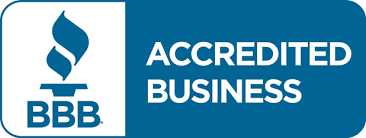BLOG
Blog

12 Nov, 2020
In true 2020 fashion, the presidential election has been a rollercoaster ride. On Saturday, November 7, four days after election day, most media outlets projected Joe Biden as the next President of the United States.1 However, the call for Joe Biden didn’t come without suspense, as the country waited for days for ballots to be counted in Pennsylvania, Arizona, Georgia, and Nevada.1 As of Monday, November 9, President Trump and many members of the GOP claimed that the election had been marred by fraudulent activity, and they vowed to pursue legal options to resolve those alleged issues.2 Barring any legal rulings that change the outcome, it appears that Joe Biden will be sworn in as the 46th president on January 20, 2021. What does a Biden presidency mean for the economy, the financial markets, and for your nest egg? Taxes What does a Biden win mean for the economy? It’s difficult to say. One certainty is that a Biden administration would pursue a wide range of tax increases. Biden’s tax plan includes income tax increases for those making more than $400,000 along with increases in payroll taxes, corporate taxes, and capital gains. The Tax Foundation estimates that the Biden tax plan would reduce GDP by 1.62% over the long-term.3 COVID and Stimulus However, there are some who think a Biden presidency could positively impact the markets and the economy. David Wessel, director of the Hutchins Center at the Brookings Institute, said that the coronavirus pandemic and any possible stimulus are the biggest near-term economic issues.4 He added that the paths each candidate may take on those issues are substantially different. Biden is expected to push for a large stimulus package for both individuals and businesses. “In fact, that’s the scenario the stock market seems to be expecting and welcoming, even though Joe Biden is talking about raising taxes on investors,” Wessel said in an interview with NPR.4 Energy Prices Some also speculate that a Biden presidency may lead to higher energy prices. A recent study from GasBuddy reported that “a Joe Biden presidency would favor more environmental controls with respect to drilling and emissions, increasing fuel mileage standards, alternative vehicle power like electricity, expanded tax credits benefiting fuel efficient vehicle owners, and evolving from fossil fuels.”5 Patrick DeHaan, head of petroleum analysis at GasBuddy, added, “Biden would end drilling, curbing U.S. oil production and end fracking, which could potentially send oil prices and thus gas prices higher.”5 Is Biden or Trump better for the economy? Since it’s election season, there’s always speculation about which candidate will be better for the economy and the financial markets. However, the truth isn’t so clear. According to Michael Townsend, vice president of legislative and regulatory affairs at Charles Schwab, “Markets are not historically affected by which party wins the White House and/or control of Congress, and that seems to be the case again this year.”6 This year has been one of uncertainty, and that will likely continue in 2021, regardless of whether Joe Biden is president or not. Let’s connect today to analyze your strategy and take action to protect you from market and tax risk. Contact us to start the conversation. 1https://www.cnn.com/2020/11/07/politics/joe-biden-wins-us-presidential-election/index.html 2https://www.theguardian.com/us-news/2020/nov/08/donald-trump-concede-legal-challenge-republicans-joe-biden-golf 3https://taxfoundation.org/joe-biden-tax-plan-2020/ 4https://www.npr.org/2020/11/03/930722317/how-the-presidential-election-winner-could-effect-the-economy 5https://www.marketwatch.com/story/why-a-biden-presidency-may-lead-to-higher-gasoline-prices-11603992805 6https://www.azcentral.com/story/money/business/economy/2020/11/03/how-biden-trump-election-win-affect-stock-market/6127375002/ Licensed Insurance Professional. This information is designed to provide a general overview with regard to the subject matter covered and is not state specific. The authors, publisher and host are not providing legal, accounting or specific advice for your situation. By providing your information, you give consent to be contacted about the possible sale of an insurance or annuity product. This information has been provided by a Licensed Insurance Professional and does not necessarily represent the views of the presenting insurance professional. The statements and opinions expressed are those of the author and are subject to change at any time. All information is believed to be from reliable sources; however, presenting insurance professional makes no representation as to its completeness or accuracy. This material has been prepared for informational and educational purposes only. It is not intended to provide, and should not be relied upon for, accounting, legal, tax or investment advice. This information has been provided by a Licensed Insurance Professional and is not sponsored or endorsed by the Social Security Administration or any government agency. 20570 - 2020/19

12 Nov, 2020
This year has been a rollercoaster ride. COVID has dominated the headlines and impacted every aspect of our lives. It has shut down businesses, schools, and workplaces. It’s changed the way we interact and socialize. And of course, it has deeply impacted the economy and the financial markets. It can be hard in 2020 to find the good news, but there actually are a few economic developments for which we can be grateful. There’s also quite a bit of uncertainty ahead of us. As we approach the end of 2020, now may be a good time to reflect on what has transpired over the past 11 months, and what steps you may need to take to prepare for what comes next. Below are three positive developments that you may want to consider as you prepare for 2021: The Markets Rebound COVID ended the longest bull market and longest economic expansion in history. The previous bull market started in 2009 and lasted for nearly a decade before crashing in just a few short weeks over February and January of this year.1 Between February 19 and March 23, the S&P 500 fell 33.93%. Since that point, though, the markets have surged. From March 23 through October 29, the S&P 500 is up 47.94% and is nearly back to its pre-COVID levels.2 As mentioned, though, there is still uncertainty ahead. The COVID pandemic is far from over. There’s also uncertainty about how the results of the election will impact the markets, the economy, and the country’s COVID response. While the market's rebound is a fortunate turn of events, there’s no guarantee that it will continue. Now is a good time to evaluate your strategy and lock-in any gains before another potential downturn occurs. A financial professional can help you explore options. GDP Surge In the second quarter, GDP fell by 31.4%, the largest quarterly drop in history. In the third quarter, it rebounded by 33.1%, the largest quarterly gain in history. That number easily beat the previous record of 16.7% in the third quarter of 1950.3 Much of the rebound was driven by the service industry and the reopening of much of the economy. Of course, the continuing rise in COVID cases may threaten the economic rebound. Twenty-nine states hit record levels for daily new cases in October. Forty states had an increase of 10% just in the last week of October.4 CARES Act Financial Flexibility The COVID pandemic and its economic fallout have created financial challenges for millions of Americans. While the government is still debating a second round of stimulus, the first round, known as the CARES Act, continues to provide financial flexibility for those facing difficulties. As part of the CARES Act, you can withdraw up to $100,000 from your 401(k) or IRA without facing early distribution penalties. The taxes on the distribution can even be spread out over a three-year period.5 Granted, withdrawing money from your 401(k) or IRA isn’t the best strategy for your retirement. However, it is an added measure of flexibility that didn’t exist prior to this year and it could be a blessing if you’re struggling due to the COVID pandemic. The end of 2020 is approaching. It’s been a rollercoaster ride, but there have been some positive developments, especially in the second half of the year. Let’s talk about how to protect what you have and limit your exposure to future risk and uncertainty. Contact us today at Hampton Financial Services and let’s start the conversation. 1https://www.cnn.com/2020/03/11/investing/bear-market-stocks-recession/index.html 2https://www.google.com/finance/quote/.INX:INDEXSP 3https://www.cnbc.com/2020/10/29/us-gdp-report-third-quarter-2020.html 4https://www.cnn.com/2020/10/28/health/us-coronavirus-wednesday/index.html 5https://www.irs.gov/newsroom/coronavirus-related-relief-for-retirement-plans-and-iras-questions-and-answers Licensed Insurance Professional. This information is designed to provide a general overview with regard to the subject matter covered and is not state specific. The authors, publisher and host are not providing legal, accounting or specific advice for your situation. By providing your information, you give consent to be contacted about the possible sale of an insurance or annuity product. This information has been provided by a Licensed Insurance Professional and does not necessarily represent the views of the presenting insurance professional. The statements and opinions expressed are those of the author and are subject to change at any time. All information is believed to be from reliable sources; however, presenting insurance professional makes no representation as to its completeness or accuracy. This material has been prepared for informational and educational purposes only. It is not intended to provide, and should not be relied upon for, accounting, legal, tax or investment advice. This information has been provided by a Licensed Insurance Professional and is not sponsored or endorsed by the Social Security Administration or any government agency.

12 Nov, 2020
The recovery in the financial markets hit some turbulence in October, as investors wrestled with anxiety about increasing COVID cases. However, a surge in gross domestic product (GDP) in the third quarter may signal that the economy is on the rebound.1 Through October 28, all major indexes had mostly recouped most of their losses from the COVID crash in March. However, all were down for the month of October. Below is each index’s return from October 1 through October 28: S&P 500: -2.73%2 DJIA: -4.54%3 NASDAQ: -1.46%4 Here are the year-to-date returns of the major indexes: S&P 500: 0.40%2 DJIA: -8.14%3 NASDAQ: 21.04%4 What spooked the markets in October? There are a few factors, but as is the case with most things in 2020, COVID may be the primary factor. COVID Cases Ramp Up The COVID numbers are surging in the United States, suggesting that the end of the pandemic may be nowhere in sight. On Wednesday, October 28, the seven-day average for new daily cases hit an all-time high of 71,832, an increase of more than 20% in only a week.5 Twenty-nine states hit record levels for daily new cases in October. Forty states had an increase of 10% just in the last week of October.6 Thirty-six states had increases of at least 5% in COVID-related hospitalizations in the final week of October.5 The surge in cases is leading to a new round of business closures and regulations. Illinois recently stopped indoor dining at bars and restaurants.7 Investors may be spooked by the prospect of a second round of closures and its impact on the economy. A new report from Yelp found that 60% of businesses that were shutdown for COVID will never reopen.8 Stimulus Outlook The uncertainty of a second stimulus may also be a drag on the markets. In fact, Gary Cohn, former president and CEO of Goldman Sachs and former White House National Economic Council Director, says it is a primary factor driving the markets’ poor performance in October.9 He added in a recent interview that, “no one thinks we’re going to have stimulus until after the election,” and that, “we know that the markets do not like unpredictability.” He said that there was “100% probability” that stimulus won’t happen until after November 3rd, and possibly not until after the inauguration.9 Fund Flows Some recent data on mutual fund flows may provide insight into how investors feel about the financial markets. Through October 21, equity funds (including mutual funds and ETFs) saw net outflows for 11 consecutive weeks. That means more money flowed out of these funds than flowed into them.10 On the other side, taxable fixed-income ETFs have seen four straight weeks of net inflows. That may mean that investors are leaving equities for fixed income securities, even with interest rates near zero.10 GDP Surges in 3rd Quarter On a positive note, GDP surged by 33.1% in the third quarter, beating analyst expectations of 32%. The third quarter number is the largest quarterly GDP gain on record, easily beating the previous high of 16.7% in the third quarter of 1950.11 Of course, the third quarter surge comes after a 31.4% decline in GDP in the second quarter. Even with the increase in the third quarter, the economy is still projected to contract by 3.5% in 2020.11 The markets and the economy have rebounded, but the future is still uncertain. This may be a good time to explore options that can protect your assets from market volatility. Contact us today at Midwest Retirement Advisors. We can help you explore these options and implement a strategy to protect your financial future. Let’s connect today and start the conversation. 1https://www.cnbc.com/2020/10/29/5-things-to-know-before-the-stock-market-opens-october-29-2020.html 2https://www.google.com/finance/quote/.INX:INDEXSP 3https://www.google.com/finance/quote/.DJI:INDEXDJX 4https://www.google.com/finance/quote/.IXIC:INDEXNASDAQ 5https://www.cnbc.com/2020/10/28/covid-cases-hospitalizations-continue-to-surge-as-us-reaches-critical-point-in-pandemic.html 6https://www.cnn.com/2020/10/28/health/us-coronavirus-wednesday/index.html 7https://www.cnbc.com/2020/10/28/5-things-to-know-before-the-stock-market-opens-october-28-2020.html 8https://nypost.com/2020/09/17/majority-of-covid-19-business-closures-are-permanent-report/ 9https://finance.yahoo.com/news/stimulus-donald-trump-gary-cohn-markets-100-percent-probability-deal-wont-pass-before-the-election-214720697.html 10https://lipperalpha.refinitiv.com/2020/10/u-s-weekly-fundflows-insight-report-etf-and-fund-investors-focus-on-fixed-income-during-the-fund-flows-week/ 11https://www.cnbc.com/2020/10/29/us-gdp-report-third-quarter-2020.html Licensed Insurance Professional. This information is designed to provide a general overview with regard to the subject matter covered and is not state specific. The authors, publisher and host are not providing legal, accounting or specific advice for your situation. By providing your information, you give consent to be contacted about the possible sale of an insurance or annuity product. This information has been provided by a Licensed Insurance Professional and does not necessarily represent the views of the presenting insurance professional. The statements and opinions expressed are those of the author and are subject to change at any time. All information is believed to be from reliable sources; however, presenting insurance professional makes no representation as to its completeness or accuracy. This material has been prepared for informational and educational purposes only. It is not intended to provide, and should not be relied upon for, accounting, legal, tax or investment advice. This information has been provided by a Licensed Insurance Professional and is not sponsored or endorsed by the Social Security Administration or any government agency.

26 Oct, 2020
It’s the scariest time of the year. Halloween is here. It’s time for trick-or-treaters, haunted houses, spooky home decorations, and more. This may be the scariest time of the year, but it only lasts a month. The truth is there could be gaps in your investment strategy that could come back to haunt you for years or even decades. Below are a few common retirement planning mistakes that can have frightening long-term consequences. If any of these sound familiar, it may be time to meet with a financial professional. Wrong Risk Tolerance Asset allocation is an important part of any retirement strategy. Your allocation influences your risk exposure and your potential return. Generally, risk and return go hand-in-hand. Assets that offer greater potential return usually also have higher levels of risk. You can use asset allocation to find the right mix of assets for your goals and risk tolerance. Having the wrong allocation can be problematic. For example, many people have less tolerance for risk as they approach retirement. As you get closer to retirement, you have less time to recover from a loss and thus less tolerance for risk. However, if you don’t adjust your allocation, you could have more risk exposure than is appropriate. A downturn could substantially impact your nest egg. How can you make sure your allocation aligns with your risk tolerance? A consultation with a financial professional is a good first step. They can analyze your risk tolerance and your portfolio and then suggest action that can eliminate gaps and minimize risk. No Risk Protection Tools Asset allocation is one way to reduce risk, but it’s not the only way. You could also use tools that offer growth potential with limited downside exposure. For example, certain types of annuities offer potential growth with downside protection. You can participate in returns linked to the market without experiencing volatility and risk. Annuities aren’t right for everyone, however. Be sure to talk to a financial professional about whether they make sense for your strategy. Impulsive Decisions It’s natural to feel stress and anxiety when the market turns downward. Take the first quarter of 2020 for example. When the COVID pandemic began in late February, the S&P 500 declined by 33.93% in a month. You may have felt tempted to sell your investments and move to “safer” assets. However, had you done so, you may have missed out on the market’s bounce back. Since March 23, the S&P 500 has climbed 49.35%.1 The problem with impulsive decisions to move to safety is that they can often suppress your returns over time. From 1995 through 2015, the S&P 500 averaged a return of 9.85% per year. Over that same period, the average equity investor averaged a return of only 5.19%.2 Why the discrepancy in returns? Investors often make decisions based on emotion rather than a long-term strategy. While those decisions may feel right in the moment, they could lead to lost opportunity as the investor misses out on a market recovery. A financial professional can help you focus on the long-term and avoid decisions that may do more harm than good. Infrequent Reviews When’s the last time you reviewed your investment strategy with a financial professional? If it’s been a while, now may be the time to do so. A lot can change in a few months or even a year. Your goals and needs may change. Your tolerance for risk could change. Your contributions to your retirement accounts may change. This is especially true during the COVID pandemic, when economic news seems to vary on a monthly basis. Let’s schedule a review today and find the monsters hiding in your investment strategy. Contact us today at Midwest Retirement Advisors. We welcome the opportunity to consult with you and help you implement the right strategy for your needs and goals. Let’s connect today and start the conversation. 1https://www.google.com/search?q=INDEXSP:.INX&tbm=fin&stick=H4sIAAAAAAAAAONgecRowi3w8sc9YSntSWtOXmNU5eIKzsgvd80rySypFBLnYoOyeKW4uTj1c_UNDM0qi4t5FrHyePq5uEYEB1jpefpFAAAU6wGESAAAAA#scso=_QQBhX8b3K5K-tQbo56XwCw7:0 2https://www.thebalance.com/why-average-investors-earn-below-average-market-returns-2388519 Licensed Insurance Professional. This information is designed to provide a general overview with regard to the subject matter covered and is not state specific. The authors, publisher and host are not providing legal, accounting or specific advice for your situation. By providing your information, you give consent to be contacted about the possible sale of an insurance or annuity product. This information has been provided by a Licensed Insurance Professional and does not necessarily represent the views of the presenting insurance professional. The statements and opinions expressed are those of the author and are subject to change at any time. All information is believed to be from reliable sources; however, presenting insurance professional makes no representation as to its completeness or accuracy. This material has been prepared for informational and educational purposes only. It is not intended to provide, and should not be relied upon for, accounting, legal, tax or investment advice. This information has been provided by a Licensed Insurance Professional and is not sponsored or endorsed by the Social Security Administration or any government agency. 20420 - 2020/9/18

15 Oct, 2020
Technology has revolutionized every aspect of our lives, so it shouldn’t come as a surprise that tech-based investment platforms, known as robo-advisors, are becoming more popular. Robo-advisors were created in the aftermath of the 2008 financial crisis, as an alternative to traditional financial advisors and investment managers. This year, robo-advisor platforms crossed the $1 trillion threshold in assets under management.1 These web- or app-based platforms usually use a survey to gather information about your goals, assets, and risk tolerance. Then, based on that information, the program automatically develops and implements an investment strategy. There is usually little or no interaction with an advisor, so everything is based on your answers to the survey questions. Because there is no human interaction, the fees with robo-advisors are often lower than you might find with a traditional advisor or investment manager. However, cheaper isn’t necessarily better. There are many important functions that a robo-advisor can’t perform. Below are a few services you can’t get with a robo-advisor: Financial Life Decisions Your investment strategy is an important part of your financial life, but it’s just one piece of the puzzle. Many financial outcomes aren’t driven by your investment strategy, but rather the choices you make with your investments in life. For example, how much should you contribute to your 401(k) each year? Is a traditional IRA or a Roth IRA right for you? What can you do to minimize your taxes each year? When’s the right time to file for Social Security? A computer can’t answer these questions because it doesn’t understand your full financial picture. These questions and more are often very complex and require nuanced answers based on your unique needs and goals. Real human consultation with an experienced professional is often an effective way to find answers and develop a strategy. Accurate Answers and Input Like most technological strategies, a robo-advisor’s output is only as good as the input. These platforms rely on your initial answers to develop your strategy. But what if your answers to the initial survey aren’t correct? While you may be asked about your goals or risk tolerance, it’s possible that you may not truly know the answers. Do you really know if you will retire at age 65? Do you know how you would react if the market declined by a certain percentage? Again, a conversation with a professional can help you fully understand your goals and your feelings about risk. That way, your strategy can be based on what you truly need and desire rather than based on a quiz that took a few minutes to complete. Protecting You from Yourself When the COVID pandemic began in late February, the S&P 500 declined by 33.93% in a month. Did you feel tempted to sell your investments and move into cash or other less volatile assets? If so, you’re not alone. However, had you done so, you may have missed out on the market’s bounce back. Since March 23, the S&P 500 has climbed 49.35%.2 It’s natural to feel anxious or unnerved by market declines, especially when it falls as rapidly as it did earlier this year. However, an advisor can help you look at the long-term strategy and help you determine if a change in allocation is actually warranted. A robo-advisor simply executes your order to sell without any consultation or advice. While that may be convenient, it may not be the best decision for your long-term goals. Looking for custom advice and strategy to help you reach your biggest financial goals? Let’s talk about it. Contact us today at Midwest Retirement Advisors. We can help you analyze your needs and implement a strategy. Let’s connect soon and start the conversation. 1https://www.tradersmagazine.com/news/robo-advisors-to-become-1-4t-industry-this-year/ 2https://www.google.com/search?q=INDEXSP:.INX&tbm=fin&stick=H4sIAAAAAAAAAONgecRowi3w8sc9YSntSWtOXmNU5eIKzsgvd80rySypFBLnYoOyeKW4uTj1c_UNDM0qi4t5FrHyePq5uEYEB1jpefpFAAAU6wGESAAAAA#scso=_QQBhX8b3K5K-tQbo56XwCw7:0 Licensed Insurance Professional. This information is designed to provide a general overview with regard to the subject matter covered and is not state specific. The authors, publisher and host are not providing legal, accounting or specific advice for your situation. By providing your information, you give consent to be contacted about the possible sale of an insurance or annuity product. This information has been provided by a Licensed Insurance Professional and does not necessarily represent the views of the presenting insurance professional. The statements and opinions expressed are those of the author and are subject to change at any time. All information is believed to be from reliable sources; however, presenting insurance professional makes no representation as to its completeness or accuracy. This material has been prepared for informational and educational purposes only. It is not intended to provide, and should not be relied upon for, accounting, legal, tax or investment advice. This information has been provided by a Licensed Insurance Professional and is not sponsored or endorsed by the Social Security Administration or any government agency. 20419 - 2020/9/17

05 Oct, 2020
On Wednesday, September 16, Federal Reserve Chairman Jerome Powell offered his assessment of the economic recovery. The press conference offered some positive news, but also a sobering prediction that a full economic recovery will take years.1 The good news is that the Fed has cut its 2020 median unemployment rate projection to 7.6%, down from a 9.3% forecast in June. The Fed also adjusted its projected 2020 GDP reduction to 3.7%, down from a 6.5% decline that was projected in June. GDP, which stands for gross domestic product, is a broad measure of economic growth. A decline in GDP means the economy is contracting rather than expanding.1 Powell also said that the Fed had shifted its focus to employment growth rather than inflation control. That means the Fed expects to keep interest rates at or near zero until the economy is near maximum employment and inflation is projected to exceed 2%. He added that it will likely take years before the economy has reached those thresholds.1 While low interest rates may be good for borrowers and investors, Powell’s comments indicate that the Fed believes the economy is years away from a full recovery. He indicated that unemployment is still four times higher than the pre-pandemic level.1 “That just tells you that the labor market has improved, but it’s a long way from maximum employment,” Powell said.1 Stock Market Returns The investment markets continue their recovery from the downturn that hit in March of this year. Through September 16, the indexes have the following year-to-date returns: S&P 500: 3.39%2 DJIA: -2.90%3 NASDAQ: 20.19%4 While the markets have mostly recovered from their losses earlier in the year, volatility can strike at any time. That’s especially true should the COVID pandemic worsen or if the economy suffers continued damage. There also may be increasing uncertainty as the election approaches. If you're concerned about risk, let’s talk about it. There are a wide range of strategies and tools we can implement to minimize risk and protect your retirement income . Let’s connect today and discuss your needs, goals and concerns. At Midwest Retirement Advisors, we welcome the opportunity to help you implement a strategy based on your objectives. 1https://www.cnn.com/2020/09/16/economy/federal-reserve-september-meeting/index.html 2https://www.google.com/search?q=INDEXSP:.INX&tbm=fin&stick=H4sIAAAAAAAAAONgecRowi3w8sc9YSntSWtOXmNU5eIKzsgvd80rySypFBLnYoOyeKW4uTj1c_UNDM0qi4t5FrHyePq5uEYEB1jpefpFAAAU6wGESAAAAA#scso=_nHNjX8_WMNLKtQbPmoKICQ7:0,_BHtjX7uKPNqttQbohYywCQ7:0 3https://www.google.com/search?q=INDEXDJX:.DJI&tbm=fin&stick=H4sIAAAAAAAAAONgecRozC3w8sc9YSmtSWtOXmNU4eIKzsgvd80rySypFBLjYoOyeKS4uDj0c_UNkgsry3kWsfJ6-rm4Rrh4RVjpuXh5AgAzsV5OSAAAAA#scso=_hH9jX4eyE5m1tAbHirPABA7:0 https://www.google.com/search?q=INDEXNASDAQ:.IXIC&tbm=fin&stick=H4sIAAAAAAAAAONgecRoyi3w8sc9YSmdSWtOXmNU4-IKzsgvd80rySypFJLgYoOy-KR4uLj0c_UNjCxMjYtyeBaxCnr6ubhG-DkGuzgGWul5Rng6AwDeg85uTgAAAA#scso=_139jX-TyCIy3tAbe4bnYBg7:0 Licensed Insurance Professional. This information is designed to provide a general overview with regard to the subject matter covered and is not state specific. The authors, publisher and host are not providing legal, accounting or specific advice for your situation. By providing your information, you give consent to be contacted about the possible sale of an insurance or annuity product. This information has been provided by a Licensed Insurance Professional and does not necessarily represent the views of the presenting insurance professional. The statements and opinions expressed are those of the author and are subject to change at any time. All information is believed to be from reliable sources; however, presenting insurance professional makes no representation as to its completeness or accuracy. This material has been prepared for informational and educational purposes only. It is not intended to provide, and should not be relied upon for, accounting, legal, tax or investment advice. This information has been provided by a Licensed Insurance Professional and is not sponsored or endorsed by the Social Security Administration or any government agency. 20415 - 2020/9/17

By Don Orban
•
21 Aug, 2020
The United States set a somber record on Thursday, July 16, 2020, with more than 75,000 new COVID-19 cases. In fact, the U.S. set new single-day COVID-19 records 11 times between June 17 and July 16. Dr. Anthony Fauci predicts the country will soon top over 100,000 new cases each day. 1 COVID-related deaths are also increasing in some states. Florida set its single day record for COVID deaths on July 16, with 156. Nine other states also set single-day death records the same week. 1 The resurgence in coronavirus cases has led some states to enact new measures. More than half of all states now have some kind of mask mandate. California has even rolled back its reopening, closing bars, indoor dining, gyms, and more. 2 What does this mean for the economic recovery? And what does it mean for your financial future? It’s impossible to predict what will happen in the short-term, but knowing where things stand today may help you make important decisions with your strategy.

By Don Orban
•
17 Aug, 2020
Social Security is a critical piece of the income puzzle for most retirees. In fact, half of married retirees and nearly 70% of unmarried retirees rely on Social Security for more than 50% of their retirement income. 1 Your Social Security benefit amount is based on a few factors, including your career earnings and your age at the time you file for benefits. However, your benefit amount isn’t locked-in forever. It often increases each year because of something called COLA. 2 COLA stands for “cost-of-living adjustment.” It’s an annual increase in the benefit amount to help recipients cover increases in their cost of living. In 2020, COLA was 1.6%, down from a 2.8% increase in 2019. 2 Since 2000, Social Security benefits have increased by a cumulative 53% because of COLA. The problem? Retiree spending has increased by more than 99%. 2 While COLA can be helpful, it often isn’t enough to match inflation. In fact, since 2009, COLA has averaged only 1.4% annually. 2 Fortunately, you can implement other strategies to protect your spending power and combat inflation. Below are a few ideas to consider:

By Don Orban
•
03 Aug, 2020
What are the biggest expenses you’ll face in retirement? Healthcare? Housing? Travel? All of those costs could be significant, but one of the biggest could be taxes. That’s right. Just because you’re done working, doesn’t mean you’re done paying taxes. Many sources of retirement income, like Social Security, pensions, and retirement account distributions, are taxable. That doesn’t even include the wide range of other taxes you could face, like property taxes, sales tax, and more. Taxes may be a part of life, but they can also be a drain on your retirement. Every dollar you pay in taxes is a dollar that can’t be used to support your lifestyle and fund your goals. Fortunately, you can take action to reduce your tax burden and maximize your retirement income. Below are five steps to consider as you approach retirement: 1) Use a Roth IRA. A traditional IRA is an effective savings vehicle for retirement. You get tax-deferred growth, and potentially tax deductions for your contributions. However, a traditional IRA can also create tax issues in retirement. Most distributions from a traditional IRA are taxed as income. If you use an IRA to accumulate a sizable nest egg, you could face taxes on much of your income in retirement. The alternative is a Roth IRA. In a Roth IRA, you don’t get tax deductions when you make a contribution. However, your distributions in retirement are tax-free, assuming you are at least age 59 ½ and you have held the Roth for at least five years. As a married couple, you cannot contribute to a Roth if your income is greater than $196,000 in 2020. For a single person, that limit is $124,000. 1 Otherwise, you can contribute up to $6,000 this year, or up to $7,000 if you’re 50 or older. 2 You can also convert your traditional IRA to a Roth. This means paying taxes on the traditional IRA amount. However, after the conversion, you can grow the remaining assets in the Roth on a tax-free basis and take tax-free distributions in retirement. 2) Be strategic about Social Security distributions. Social Security will likely play a role in your retirement income puzzle. However, taxes will impact the net amount you receive from Social Security. The extent that your Social Security benefit is taxed depends on a number called your “combined income.” Combined income is your adjusted gross income plus nontaxable interest plus half of your Social Security benefit. 3 If you are single and your combined income is between $25,000 and $34,000, up to 50% of your benefits could be taxable. If you earn more than $34,000, up to 85% of your benefits could be taxable. 3. For married couples, if your combined income is between $32,000 and $44,000, up to 50% of your benefits could be taxed. If you earn more than $44,000, up to 85% of your benefits could be taxed. The key to reducing your combined income is to reduce your adjusted gross income. Non-taxable income is not included in that number. So, for example, you could maximize your Roth IRA to minimize your adjusted gross income. You could also delay Social Security until age 70 to increase your benefit, and draw down your taxable accounts, like a traditional IRA, before Social Security starts. 3) Consider downsizing. Simply moving to a new home could reduce your taxes. Property taxes may be a major tax burden depending on your home. If you no longer need a large home, consider moving to something smaller that has a lower value and thus lower property taxes. You also may look at a neighboring community that has a lower property tax rate. 4) Relocate to a more tax-friendly state. Another option is to move to another state completely. Some states are more tax-friendly for retirees than others. For example, Alabama doesn’t tax Social Security benefits and has a relatively low sales tax rate. 4 Florida is another option as it doesn’t have a state income tax. 5 Do your research and you may find a new home that is appealing and saves you money. 5) Use an HSA to pay for medical costs. Fidelity estimates that the average 65-year-old couple will pay $285,000 out-of-pocket for health care expenses in retirement. 6 If you’re using taxable distributions from an IRA or 401(k) to pay those costs, the impact on your savings could be even greater. One strategy to minimize the tax burden is to use a health savings account (HSA) to pay for healthcare costs. In 2020, individuals can contribute up to $3,550 to an HSA. Families can contribute up to $7,100. 7 You can invest and allocate those funds to match your goals and risk tolerance. The assets grow on a tax-deferred basis as long as they stay in the account. When you’re ready to use the funds, you can take tax-free distributions to pay for qualified healthcare expenses like premiums, deductibles, copays, and more. By using a tax-free source to pay for healthcare costs, you reduce the amount you need to take from taxable accounts, like an IRA or 401(k). That, in turn, reduces your overall tax burden. A financial professional can help you determine if an HSA is right for you. Ready to develop your retirement tax strategy? Let’s talk about it. Contact us today at Midwest Retirement Advisors. We can help you analyze your needs and develop a plan. 1 https://www.irs.gov/retirement-plans/plan-participant-employee/amount-of-roth-ira-contributions-that-you-can-make-for-2020 2 https://www.irs.gov/retirement-plans/plan-participant-employee/retirement-topics-ira-contribution-limits 3 https://www.ssa.gov/benefits/retirement/planner/taxes.html#:~:text=Learn%20Apply%20Manage-,Income%20Taxes%20And%20Your%20Social%20Security%20Benefit,on%20your%20Social%20Security%20benefits.&text=between%20%2425%2C000%20and%20%2434%2C000%2C%20you,your%20benefits%20may%20be%20taxable. 4 https://money.usnews.com/money/retirement/baby-boomers/slideshows/the-most-tax-friendly-states-to-retire?slide=2 5 https://money.usnews.com/money/retirement/baby-boomers/slideshows/the-most-tax-friendly-states-to-retire?slide=4 6 https://www.cnbc.com/2019/04/02/health-care-costs-for-retirees-climb-to-285000.html 7 https://www.shrm.org/resourcesandtools/hr-topics/benefits/pages/irs-2020-hsa-contribution-limits.aspx The information contained herein is based on our understanding of current tax law. The tax and legislative information may be subject to change and different interpretations. We recommend that you seek professional legal advice for applicability to your personal situation. Licensed Insurance Professional. This information is designed to provide a general overview with regard to the subject matter covered and is not state specific. The authors, publisher and host are not providing legal, accounting or specific advice for your situation. By providing your information, you give consent to be contacted about the possible sale of an insurance or annuity product. This information has been provided by a Licensed Insurance Professional and does not necessarily represent the views of the presenting insurance professional. The statements and opinions expressed are those of the author and are subject to change at any time. All information is believed to be from reliable sources; however, presenting insurance professional makes no representation as to its completeness or accuracy. This material has been prepared for informational and educational purposes only. It is not intended to provide, and should not be relied upon for, accounting, legal, tax or investment advice. This information has been provided by a Licensed Insurance Professional and is not sponsored or endorsed by the Social Security Administration or any government agency. 20277 - 2020/7/20

Investment advisory services offered by duly registered individuals on behalf of CreativeOne Wealth, LLC a Registered Investment Adviser.
CreativeOne Wealth, LLC and Midwest Retirement Advisors are unaffiliated entities.


